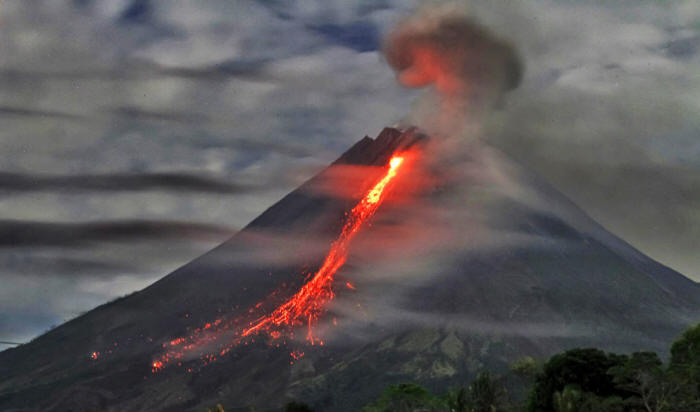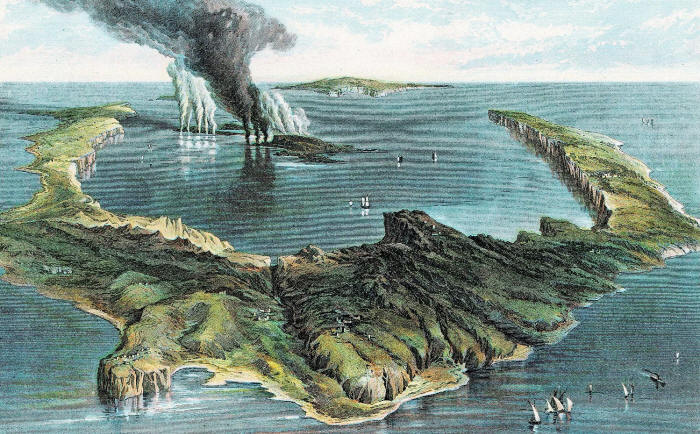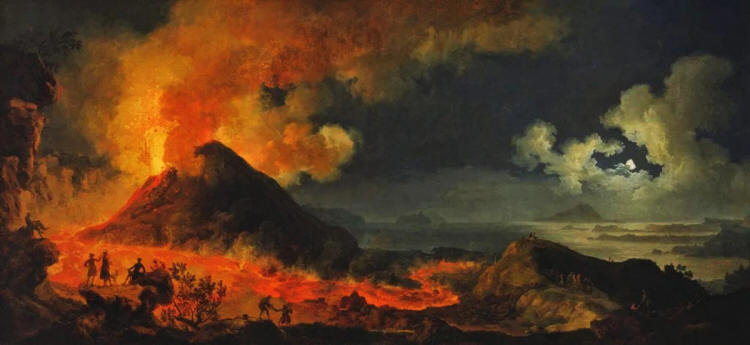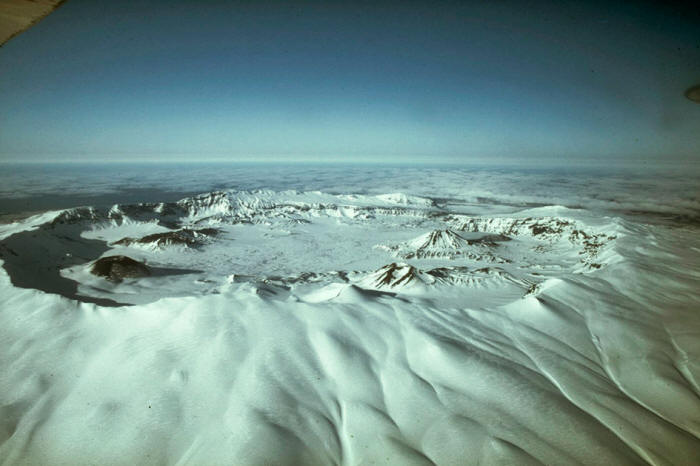|
Long before modern science could explain them, volcanic events shaped human history:
From the Bronze Age to the fall of the Roman Empire, the story of ancient volcanoes is one of sudden destruction, climate change, and social upheaval.
But around 1600 BCE - centuries before the legendary Trojan War - it vanished almost overnight.
The likely culprit?
This eruption obliterated the advanced city of Akrotiri and may have triggered a devastating tsunami that struck Crete some 75 miles away.
The resulting destruction, combined with a climate-cooling "volcanic winter," brought crop failures and famine. Weak and vulnerable, the Minoans were soon overtaken by the rising power of the Mycenaean Greeks.
Some scholars even suggest this cataclysm inspired the enduring 'myth' of Atlantis.
via Universal History Archive/UIG/ Bridgeman Images
Mount Vesuvius erupted with terrifying force, blasting pumice, ash, and molten rock into the sky.
While some managed to escape by sea, an estimated 2,000 people perished, many preserved in eerie detail by the volcanic ash that buried them.
Pompeii was lost beneath layers of debris for nearly 1,700 years, a city frozen in time that today offers unparalleled insight into daily Roman life.
The Eruption of Vesuvius (1771). Photo by Heritage Art/Heritage Images
via Getty
Images
Volcanic
Fallout in Ptolemaic Egypt
In 245 BCE, Ptolemy III's military campaigns in Mesopotamia were abruptly halted by domestic unrest, as famine and revolt gripped Egypt.
A
mystery eruption, possibly in the
Arctic, coincided with these events.
Even Cleopatra's reign in the first century BCE, often remembered for romance and political drama, was marred by recurring food shortages likely linked to distant volcanic events.
These climatic shocks helped destabilize the
regime, paving the way for Rome's eventual domination of Egypt.
In 43 BCE, the eruption of the Okmok volcano in the Aleutian Islands unleashed a global cooling event that exacerbated the turmoil.
As hunger and unrest intensified, the people of Rome turned toward strong, centralized power, setting the stage for the rise of Octavian, who became Augustus, the first Roman Emperor.
A distant eruption may well have hastened the Republic's transformation into Empire.
Aerial view looking across Okmok Caldera.
Crisis and Collapse in the Third
Century
But during the Crisis of the Third Century, everything changed.
Now, scientists believe that a powerful Arctic eruption around 260 CE played a key role in this crisis.
The environmental stress added to the Empire's
troubles, revealing
how climate shocks could unravel
even a mighty power.
Temperatures plunged, agriculture collapsed, and
famine and plague swept across the known world.
The recurring waves of disease and hunger helped
usher in the so-called
Dark Ages and ensured that the
Classical world would not rise again.
Whether erupting nearby or halfway around the globe, these natural disasters sparked,
From the Minoans to the Romans,
history shows that volcanic cataclysms were not just acts of nature
- they were drivers of human destiny...
|





